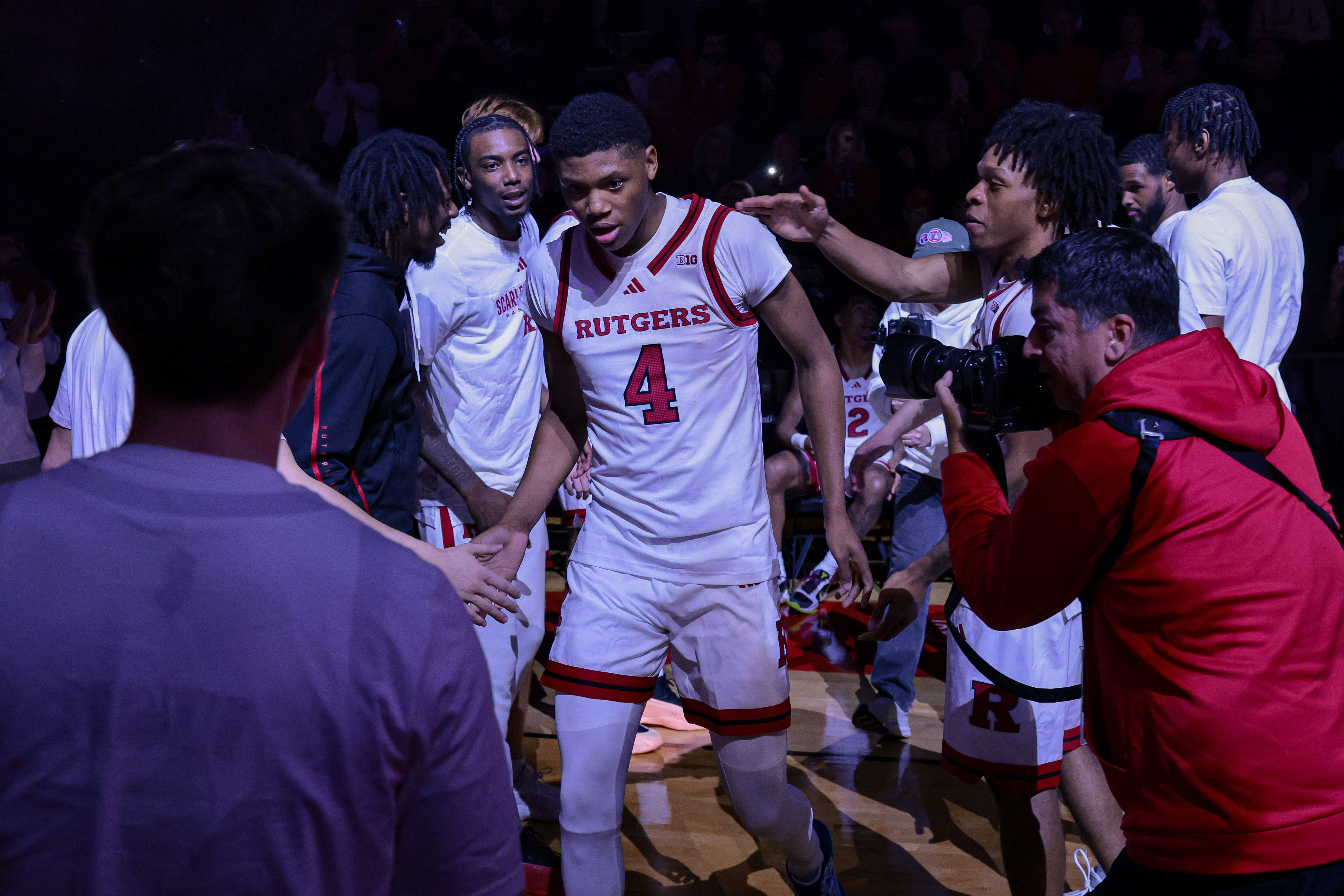
2025 NBA Draft scouting report: Is Airious "Ace" Bailey second only to Cooper Flagg?
After missing his first two games due to injury, Airious "Ace" Bailey made his long-awaited college debut against Monmouth on Nov. 15. Bailey, Rutgers’s highest-ranked recruit of all time, has garnered significant attention in a stacked freshman class.
In his first 30 minutes of college action, Bailey put up 17 points (5/10), six rebounds, two turnovers, two steals and a block. Ace Bailey and his teammate Dylan Harper will draw in the eyes of scouts all season, even in blowout victories over low-major opponents.
Many mainstream scouts and recruiting services view Bailey as an elite prospect, the clear number two (to Cooper Flagg) in a stacked class. Some even view him as the superior long-term prospect given his athletic flashes and tough-shotmaking ability as a 6’10 wing.
Another contingent of scouts is taking a more cautious approach. They are concerned with Bailey’s less-developed feel for the game, advantage creation and defensive consistency. Regardless of one’s overall opinion of Bailey as a prospect, his shotmaking profile is unquestionably impressive.
Elite shot-making is Airious Bailey's "Ace"
Against Monmouth, Bailey showcased this shooting prowess, draining a couple of difficult off-dribble jumpers in the mid-range. Bailey converted two of his five non-rim two-point attempts in his season opener. His height and fluidity allow him to shoot over all sorts of defenders, taking the handoff before hitting this leaning pull-up jumper:
Bailey drains shots with excellent touch even when he’s off balance and off platform. Take this next clip for example, where Bailey makes a difficult fadeaway jumper with a defender draped all over him:
Plays like the clip above represent a double-edged sword when it comes to Bailey’s future projection. His ability to make difficult shots is undeniably impressive, and tall shotmakers are always valuable in the eyes of the NBA. Many pro defenders will struggle to contest his shot, let alone college ones.
But Bailey often lives off of these difficult jumpers, struggling to do much else with the ball in his hands. Notice in the play above how much Bailey struggles to create separation. His handle is loose and high and he can’t get to the rim, so Bailey settles for the fadeaway.
It’s important to note the competition level while scouting and Monmouth isn’t a high-level team with pro-caliber athletes. If Bailey can’t create consistent separation off the dribble against low-major teams, will he be able to do it against Big 10 teams? Bailey is only 18 and deserves time and patience to develop these skills, but this will be something to monitor.
Even as Bailey’s creation develops, his three-point shooting should help raise his floor, especially next to an excellent passer in Dylan Harper. His first college bucket was a smooth three-pointer in the corner, hopping into the shot smoothly:
Bailey’s flashes of shooting off of movement are paramount for his projection as an off-ball shooter. Gigantic movement shooters carry a baseline of value and Bailey has shown the willingness to fire quickly running off screens. He only made one of his three triples against Monmouth, but his willingness to attempt these moving off-ball shots is encouraging:
Why Ace needs to develop his passing
Bailey’s playmaking will be another major aspect of his game to monitor. In high school, Bailey struggled at times with decision-making and court processing. Elite high-school players, especially ones playing without other elite talents like Bailey at McEachern, often need to shoot 20 or more times per game to keep their offense afloat. Their situation makes passing a less valuable option at times.
In his first college game, Bailey didn’t record an assist but did move the ball well on basic actions. With immense scoring gravity, opposition defenses will send pressure on Bailey all season. On this next possession, Bailey passes out of the double team and his team ends up hitting an open three:
To reach his ceiling, Bailey doesn’t need to become an elite playmaker. As long as he can punish over-reactive defenses, Bailey should end up as a great offensive player. He did this quite a few times against Monmouth, finding an open teammate in early offense:
Early offense and transition are where Bailey thrives most as a driver. In the half-court, Bailey can struggle to pressure the hoop against set defenses. But when defenses are scrambling, his speed, size and fluidity can take over:
This next clip was one of the more encouraging ones of the game for Bailey. Handling in the half court, Monmouth hedges hard to pressure Bailey. He’s easily able to round the defense, getting to the rim and drawing a foul. Competition level is important to consider once again, but these flashes are still good to see:
Defensive frailty lowers Ace Bailey's ceiling but there is potential
On the defensive end, Bailey has struggled with the same consistency issues he faces on offense. This is, again, understandable given his enormous offensive load in high school. Bailey imposed his size on defense against Monmouth, here rotating to steal the entry pass:
He’s not an overwhelming vertical athlete, but Bailey should be able to provide some secondary rim protection with his length and size. He’s also an excellent rebounder, skying above opponents to snare boards and finish his plays:
Playing as a drop big on this possession, Bailey does a nice job containing the drive and forcing a miss. Against lower-level athletes, his mobility and sheer size will be difficult to drive and score around:
Bailey’s shooting will have him drafted highly regardless of the other parts of his game. We’ll closely monitor how Bailey drives, passes and defends against higher-level college competition. Rutgers will face Alabama and Houston in their non-conference schedule, two excellent tests for Bailey and Harper. If everything goes right for Bailey’s ancillary components, he could see himself drafted in the top two of an elite class in 2025.